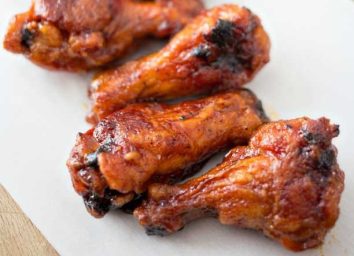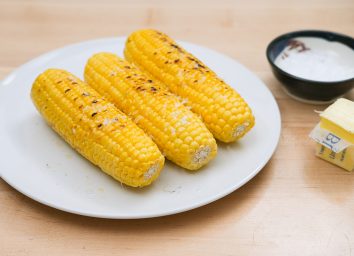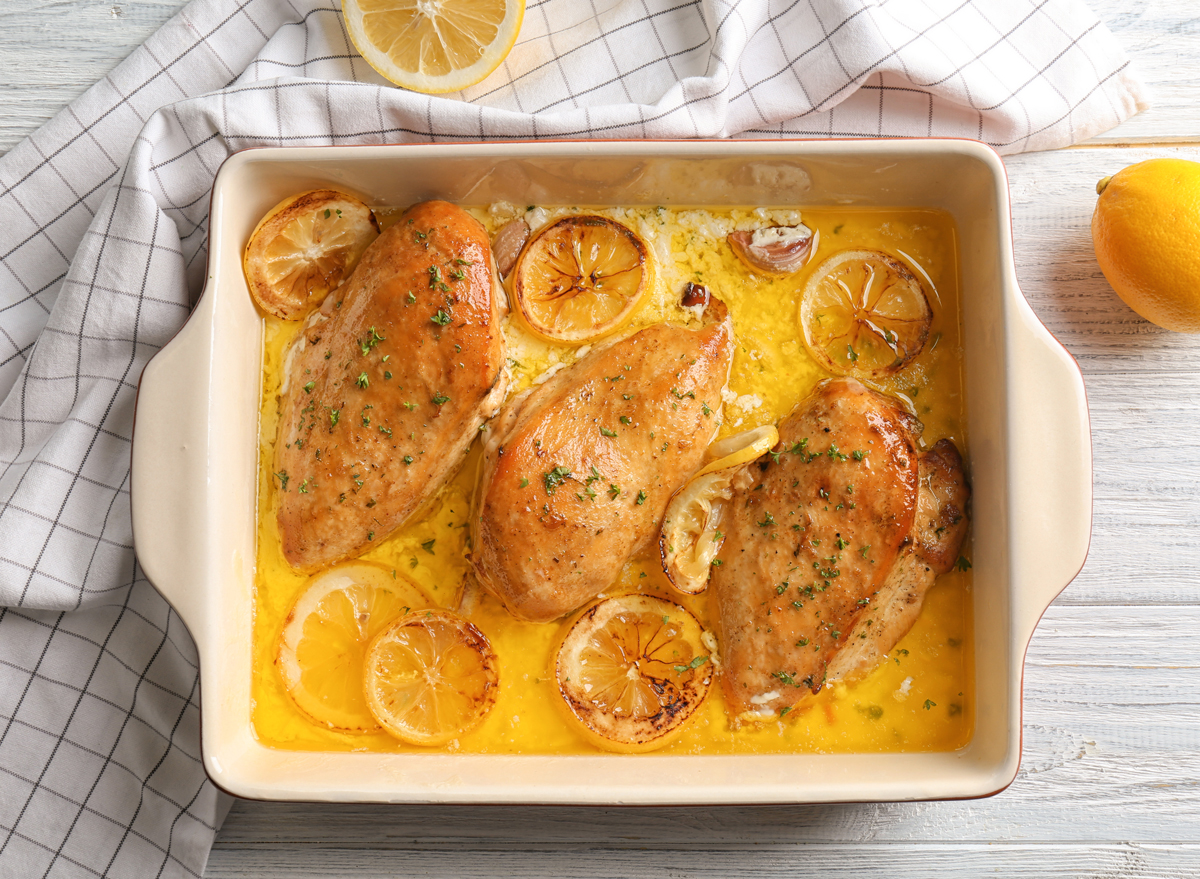
There are lots of perks of eating chicken breast — it's high in protein, low in fat, and incredibly versatile, for example — but being easy to cook certainly isn't one of them. Because chicken breasts are so lean, if you don't pay close attention while you're cooking this type of poultry, the meat can go from tender to rubbery in a matter of a minute.
Breast meat, known as white meat, comes from a muscle on the chicken that isn't used frequently, resulting in a mild flavor that makes for a great canvas to paint on with seasonings and marinades. Robert Harris, chef/owner of Season to Taste, calls chicken breast the "tofu of the meat world." "Chicken breast takes on the flavor of its surroundings, or provides a neutral vehicle to carry a contrasting texture," he explains. "But that neutral flavor and lean texture can also turn flavorless if not handled correctly."
With that in mind, here are chefs' top tips for taking chicken breast from mediocre to mind-blowing. And if red meat is more your speed, check out 9 Secrets For Cooking the Best Steak That Only Chefs Know.
Marinate or season the meat beforehand.
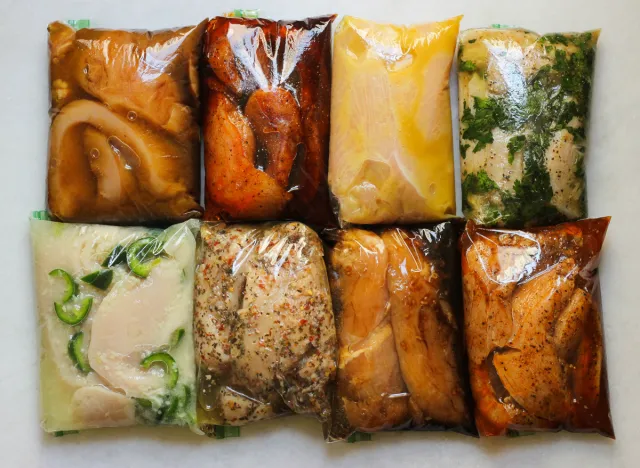
Iverson Guo, chef and owner of Karma Asian Fusion, always makes sure to season the chicken before cooking it.
"This is an absolute must to enhance the meat's natural flavors," he explains.
It can also be helpful to marinate the chicken, says Chef Eric LeBlanc, culinary director for Burtons Gril and Red Heat Tavern.
"Mix extra virgin olive oil, herbs, garlic, citrus, and spices into a wet paste, rub it onto the chicken, and give it a few hours to penetrate the meat while in the fridge," adds LeBlanc.
Another quick and easy marinade option, according to Harris, is to use salad dressing — Italian dressing, balsamic vinaigrette, or Caesar will do.
And if you plan on popping those chicken breasts on the grill, Pecking House Chef Eric Huang suggests adding a touch of honey to your marinade — the sweetness can help balance out the bitter and salty flavors from the grilling process.
Butterfly the breast.
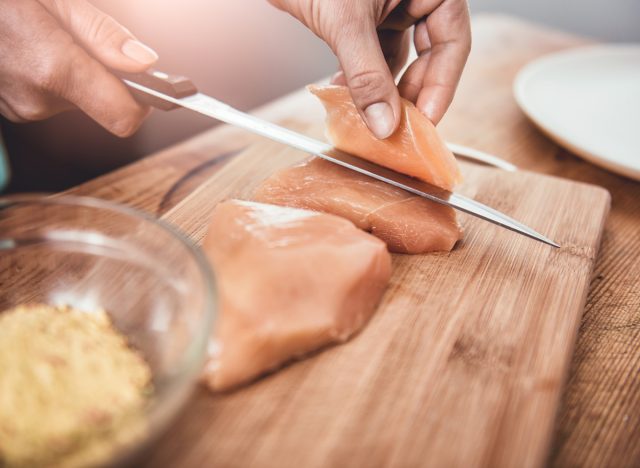
One of the trickiest things about cooking chicken breasts is that one side can easily be inches thicker than the other — meaning the thinner side may get overdone while the thicker one isn't even cooked all the way through.
That's where butterflying comes in. Sogno executive chef Jason Maynard swears by this useful technique, which entails slicing the breasts in half horizontally. By creating uniform thickness, Maynard says this method ensures the meat will cook more quickly and evenly. Plus, once the breast is butterflied, you can stuff it with something delicious — say, herbs, veggies, and cheese — before cooking.
To butterfly a breast, just place it on a cutting board, rest one hand on it, and use the other to slowly slice it horizontally from the thickest end to the thinnest one. Stop when you've almost reached the other side, and then open the chicken breast like a book. From there, you can press the chicken between two layers of plastic wrap or parchment paper and then pound it with a meat mallet or rolling pin.
Poach the chicken to add flavor.
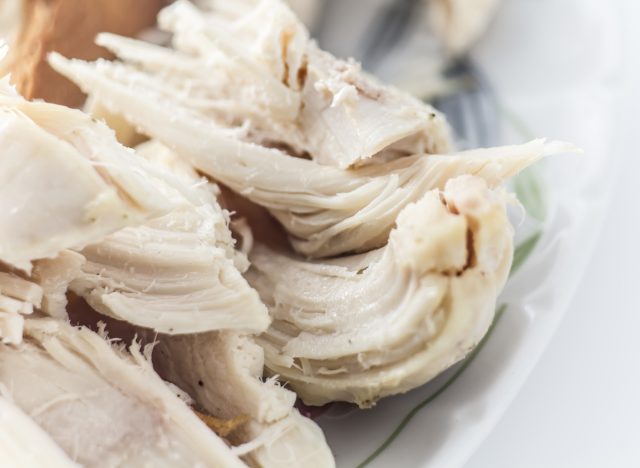
According to Gill Boyd, chef-instructor of culinary arts at the Institute of Culinary Education, one of the best ways to ensure your chicken breasts turn out as moist as possible is to poach them.
"The flavors of the cooking liquid are absorbed into the meat," he explains.
TV chef Mareya Ibrahim, advises using low-sodium chicken stock and white wine for this, but Boyd says you can also use water with lemon juice, two bay leaves, 2-4 sprigs of fresh thyme, and 10 peppercorns.
Poaching is pretty simple, too. Here's how to do it, per Boyd's instructions: Using about 2 cups of liquid per 2 chicken breasts, place the liquid in a medium-size sauce pot and heat until it's simmering. Add the chicken, make sure it's submerged — if not, you can add more liquid — and cook it until it reaches the desired internal temperature.
Brine, baby, brine.
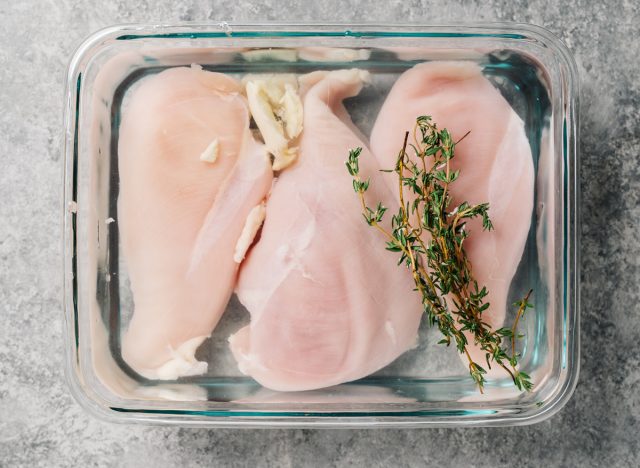
Brining your chicken may require a little extra time and planning, but it's well worth it. According to LeBlanc, brining for just 1-2 hours can result in much juicier meat.
"Poultry is very low in fat through the muscle, there isn't really any marbling and the fat is just below the skin," explains Donald Young, chef/owner of Duck Sel. "Brining the chicken breast in a 2% salt solution will help with adding moisture back. It's also the perfect time to add any flavorings as well like herbs and spices."
Wet brining works great for boneless chicken breasts, says Huang, and can also give the meat a better texture for breading, frying, roasting, or really any other cooking method.
However, if you'd prefer a less messy method that will achieve more browning on the outside, Boyd suggests making a dry brine by adding ½ teaspoon kosher salt or course-ground sea salt per side on each breast and letting it sit for 30 minutes to an hour.
Use a piping hot pan.
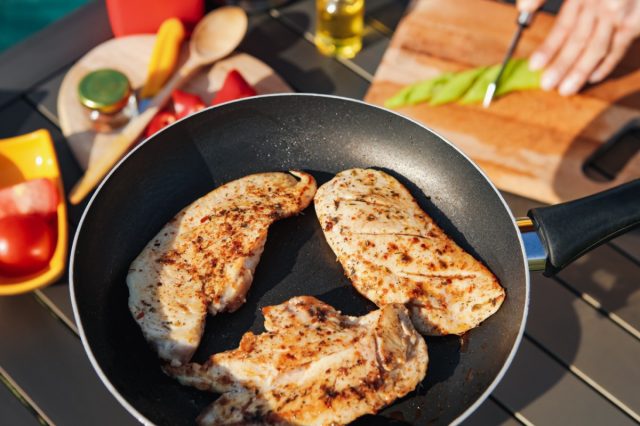
According to Guo, the key to getting chicken that's tender on the inside and crispy on the outside is to sear it in a piping hot pan. The longer you cook your chicken, the more likely it is to become tough. So, by cranking up the heat source, you can ensure you get a nice browned exterior without having to leave it in the pan for too long.
"In the culinary world, that browning effect is known as the Maillard reaction, which is the reaction that occurs between amino acids and reducing sugars when we sear food," says NoMo SoHo executive chef Evan Bergman. "Don't be afraid to keep your grill or sauté pan on high heat before placing the chicken down. It will keep it from sticking and also provide great flavor."
If the chicken still hasn't reached an internal temperature of 165 degrees Fahrenheit, but you're worried about overcooking it, Guo suggests finishing it in the oven.
Consider a sous vide machine.
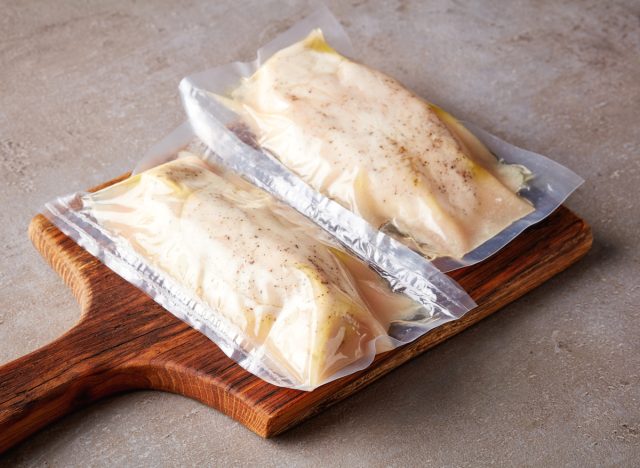
Sous vide machines, also known as water ovens, use a heated metal coil to heat up water to a consistent temperature for a gradual, well-controlled cooking process. Skeen likes using one for chicken because it'll cook more evenly.
"These machines are very inexpensive on Amazon, and your chicken will cook to perfection every time," he says. "Just pull it from the bag, and then crisp up the skin in a pan or on the grill."
Sure, you might have to exercise some patience when using a sous vide machine — but you'll never have to worry about overcooked breasts again.
Let the skin dry out.
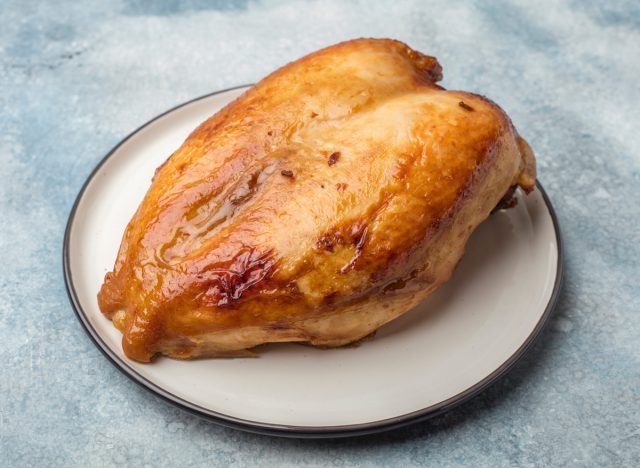
If you're working with skin-on chicken breasts and you're looking to give them that sought-after crunch factor, Huang's favorite trick is to pat the skin dry on all sides with a paper towel and then leave them in the fridge overnight to eliminate any excess moisture.
"This will allow the skin to crisp up nicely when you cook it," he explains.
If you're short on time, even leaving the breasts in the fridge for a few hours after patting them dry will go a long way.
Let the chicken rest.
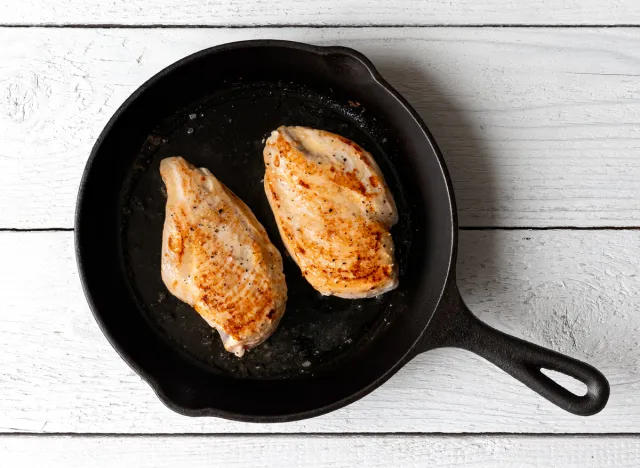
As impatient as you may be to dig in once you're finished cooking, Boyd says it's crucial to let that breast rest for 3-5 minutes before cutting it open.
According to Boyd, this brief window of time allows for "carry-over cooking," which is recommended for both food safety and flavor reasons.
"It's when the juices circulate inside the meat and the internal temperature rises to 165 degrees Fahrenheit, making the chicken safe for consumption," he explains.
Pro tip: Since the temperature does continue to rise a bit even after you remove the chicken from heat, Maynard says you'll want to stop cooking it when it's about 5-10 degrees lower than the target temp.
Use a poultry wash spray.
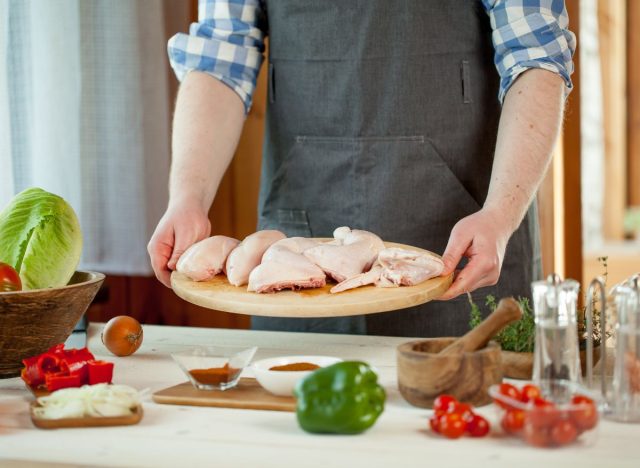
Ibrahim is a big fan of poultry wash spray — which does double duty by cleansing your chicken while simultaneously enhancing the flavor.
"I promise you this is like magic," she says. "It has a brining effect, so it will give it the juiciness that you desire and also cut down on cooking time. It also addresses some of the nasty residue that can be on chicken. There's no rinsing with water needed, just spritz the chicken breasts up to four hours before cooking it."

